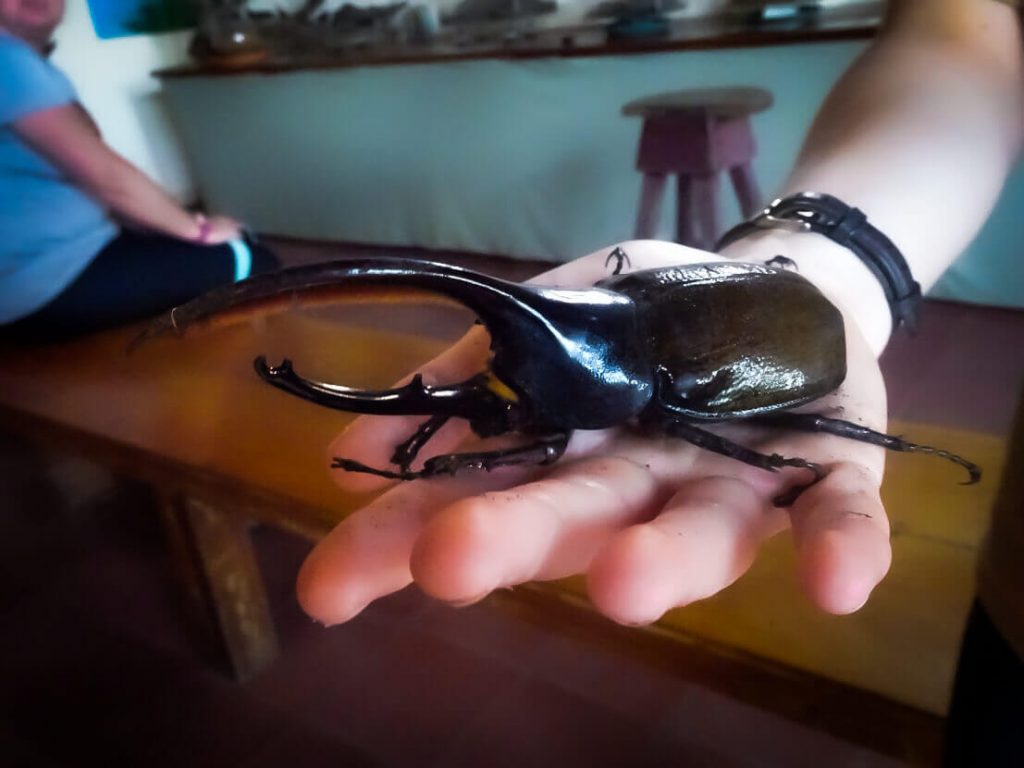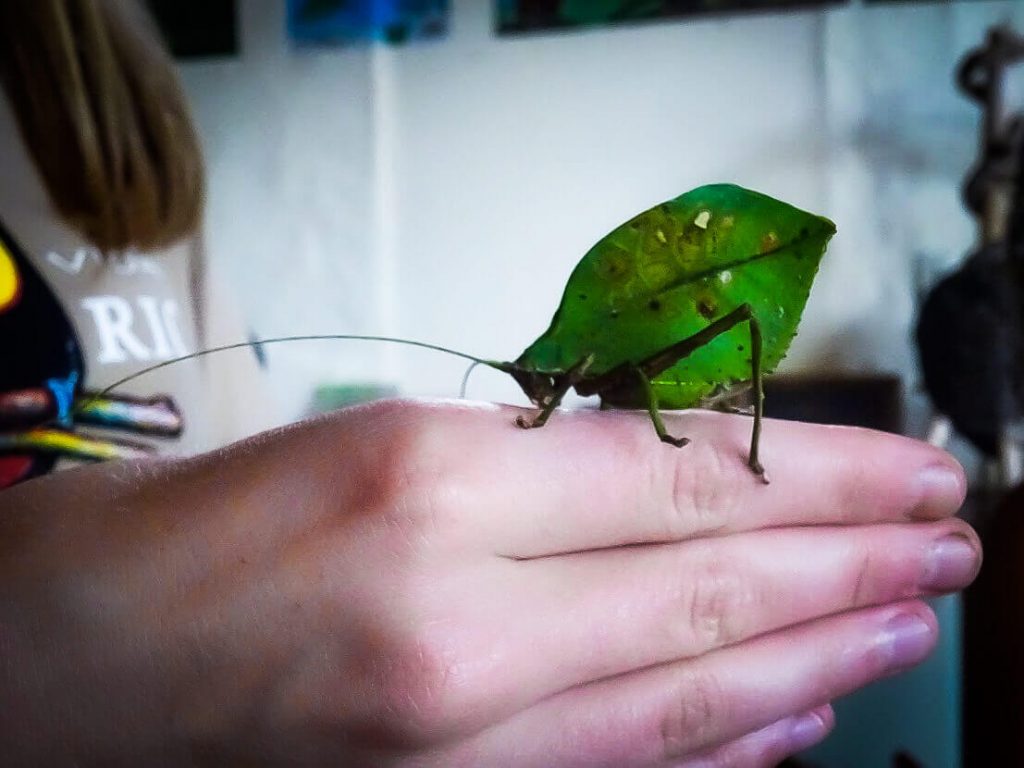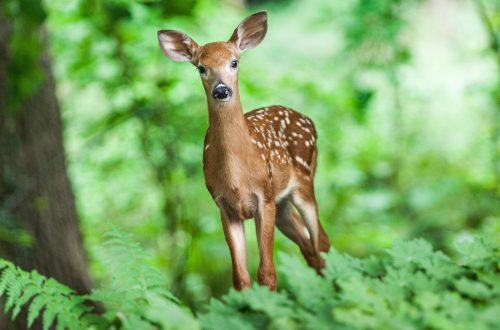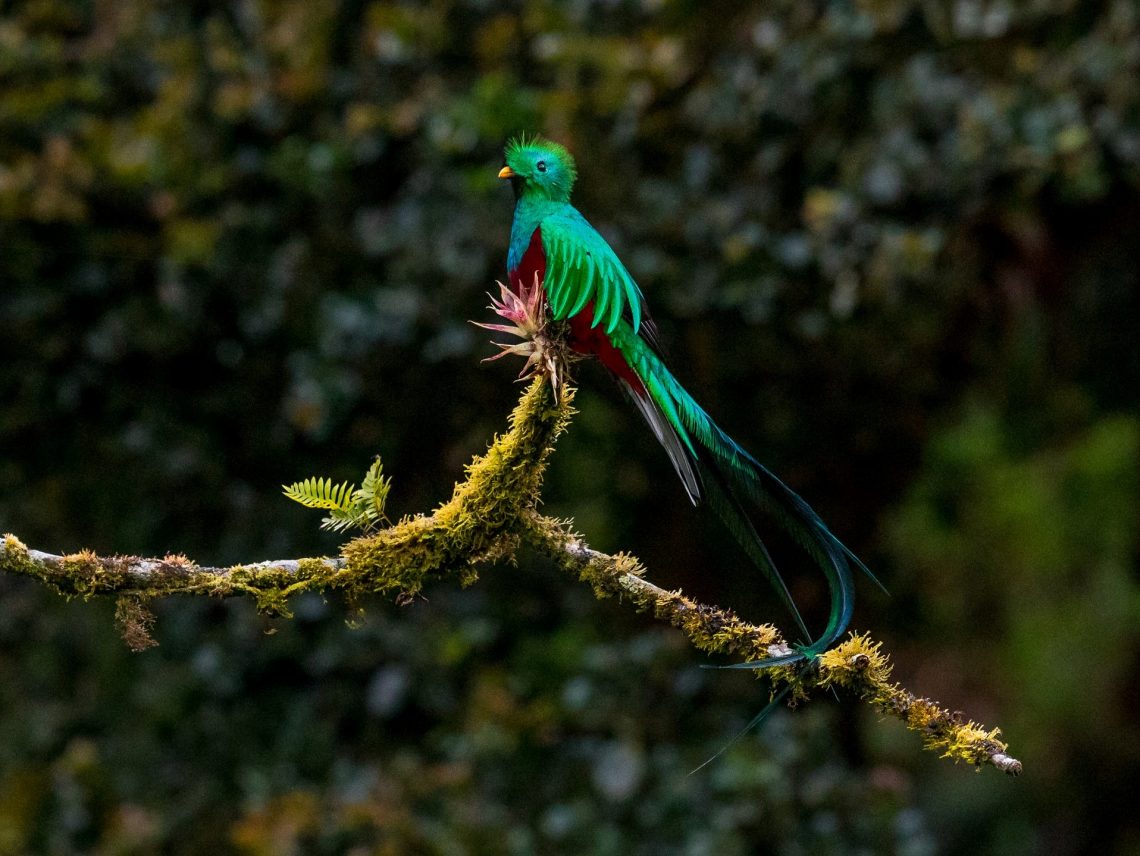
5 Reasons to LOVE the Monteverde Cloud Forest
Welcome to the Monteverde Cloud Forest
A trip to Costa Rica is a nature-lover’s dream. The Monteverde cloud forest finds its way onto many an itinerary.
But why are nature lovers so awed by this area in particular?
What is a Cloud Forest?
Cloud forests are found in mountainous regions. They find themselves shrouded in mist and fog from low clouds, the warm, moist air of the lower altitudes rises up and condenses in the cooler, higher elevations.
The air is constantly damp but the temperature is far cooler than in the rainforest at lower altitudes. Rain is a frequent event.
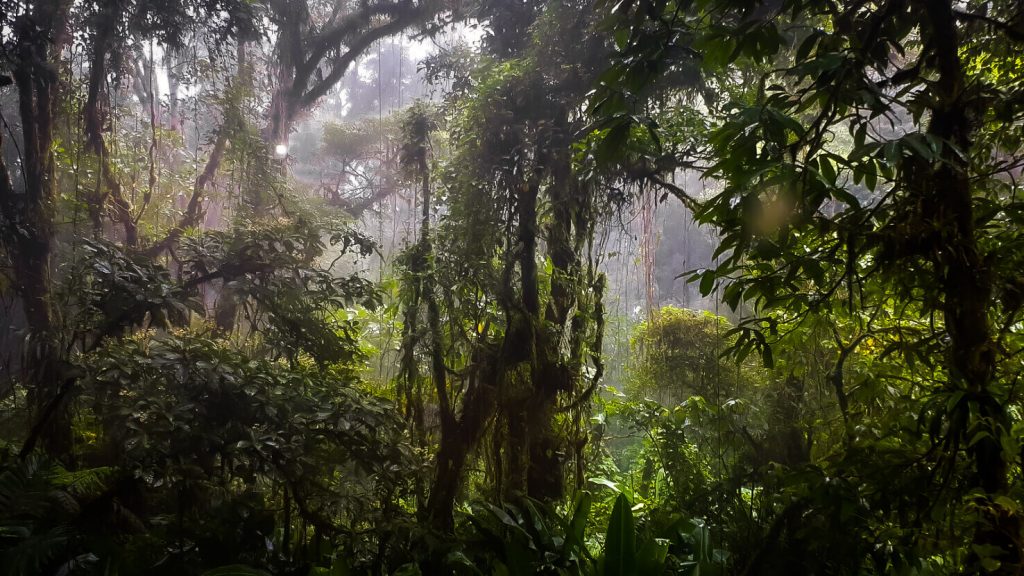
Best for Wildlife?
You might expect that the allure for nature lovers might be a rich diversity of wildlife.
It certainly is home to extraordinary biodiversity, but its presence is far less conspicuous. It manifests mainly in the variety of vegetation, birds and small amphibians.
In my experience, I actually witnessed the least wildlife in Monteverde of my entire two week tour. I’ve read other articles that reflect this too. Upon visiting the forest we were even warned ahead of time not to expect a wealth of animal sightings.
So the answer is no. If you’re looking purely for enigmatic mammals and other larger fauna, you might be disappointed by a visit to the Monteverde cloud forest.
But I have a sneaking suspicion you will find plenty of other reasons to love it…
5 Reasons the Monteverde Cloud Forest is AMAZING
1. Reforestation. Lots of it.
If you don’t love trees, I would suggest you haven’t really seen one. I mean, obviously you’ve SEEN a tree…but have you really looked? Have you seen it beautiful complexity and thought about how long it has stood there. How much has changed in the world since it was planted? How many wonderful services is it providing us with every day.
We cannot put a price on the value of nature and cloud forests are an essential, delicate and sparse resource that we need to protect.
The Monteverde Institute is performing a massive reforestation project, providing farmers with over 14,000 new trees a year.
They are aiming to reconnected fragmented habitats and increase the biodiversity of the local area. In doing so they are providing a migratory corridor for the famed bellbird ahttps://monteverde-institute.org/reforestation-program.htmlnd ensure water is conserved for the future.
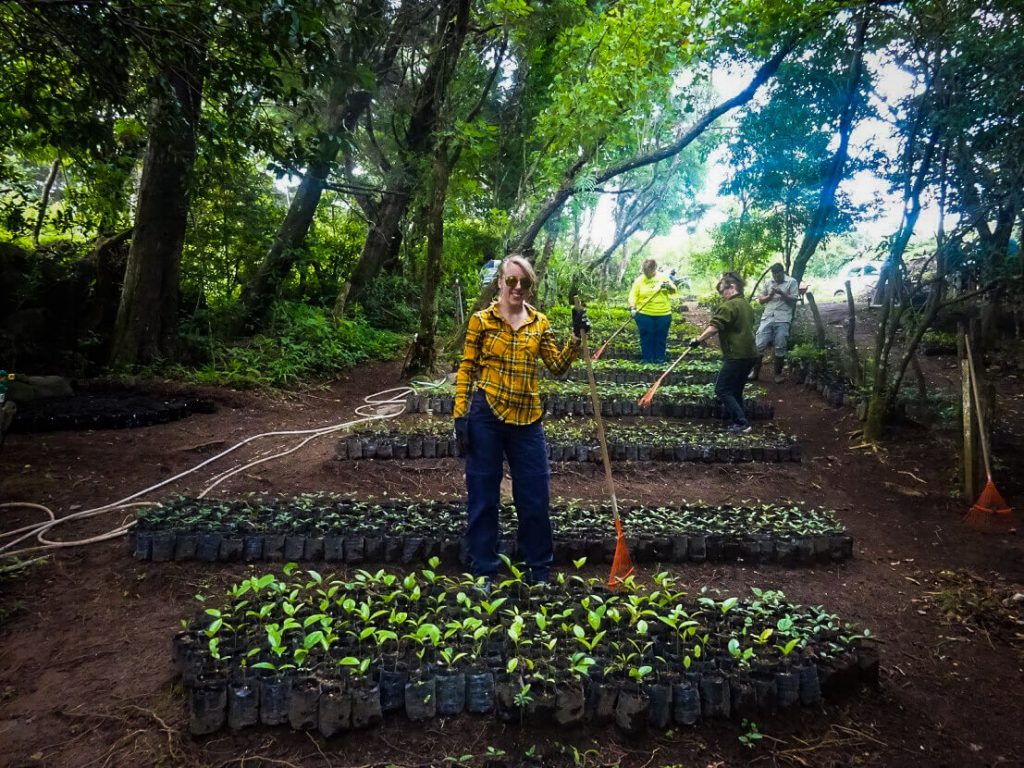
2. It is becoming a carbon positive beacon of hope.
Costa Rica hopes to become the first carbon neutral country in the world and is a world leader when it comes to sustainable living.
The Monteverde town wants to go one better and become carbon positive- removing more carbon from the atmosphere than it emits.
By changing the ways that they power the town and cycle water, they are taking active steps to reach that goal. The reforestation program plays a major role in this as well as the public outreach work and the work done in schools to promote sustainability.
The Monteverde Community Fund works to raise money to provide grants to carbon initiatives. Much of the money comes from ecotourism, providing further reasons to preserve the area.
3. Endemic species.
Endemic species exist in only one place in the world.
Thanks to the microclimate and unique features of the Monteverde cloud forest, it is home to quite a few endemic, near endemic or range restricted organisms.
The most famous example is, of course, Monteverde’s very own poster child, the resplendent quetzal. Found only in the high-altitude forests of central America, they drawn in tourists from all over the world, hoping to catch glimpse. Such is their popularity that they are partially responsible for some of the legal protections afforded to the area.
The Highland Fringe-limbed Treefrog is also restricted to similar areas. Hummingbirds and warblers also join the select group. Up to 10% of the plant life has is endemic including beautiful heliconias and creeping vines.
Sadly, Monteverde’s most prized endemic species, the golden toad, went extinct in the 1980s and has not been seen since. Scientists are determined that no more of it’s endemic cousins should suffer the same fate!
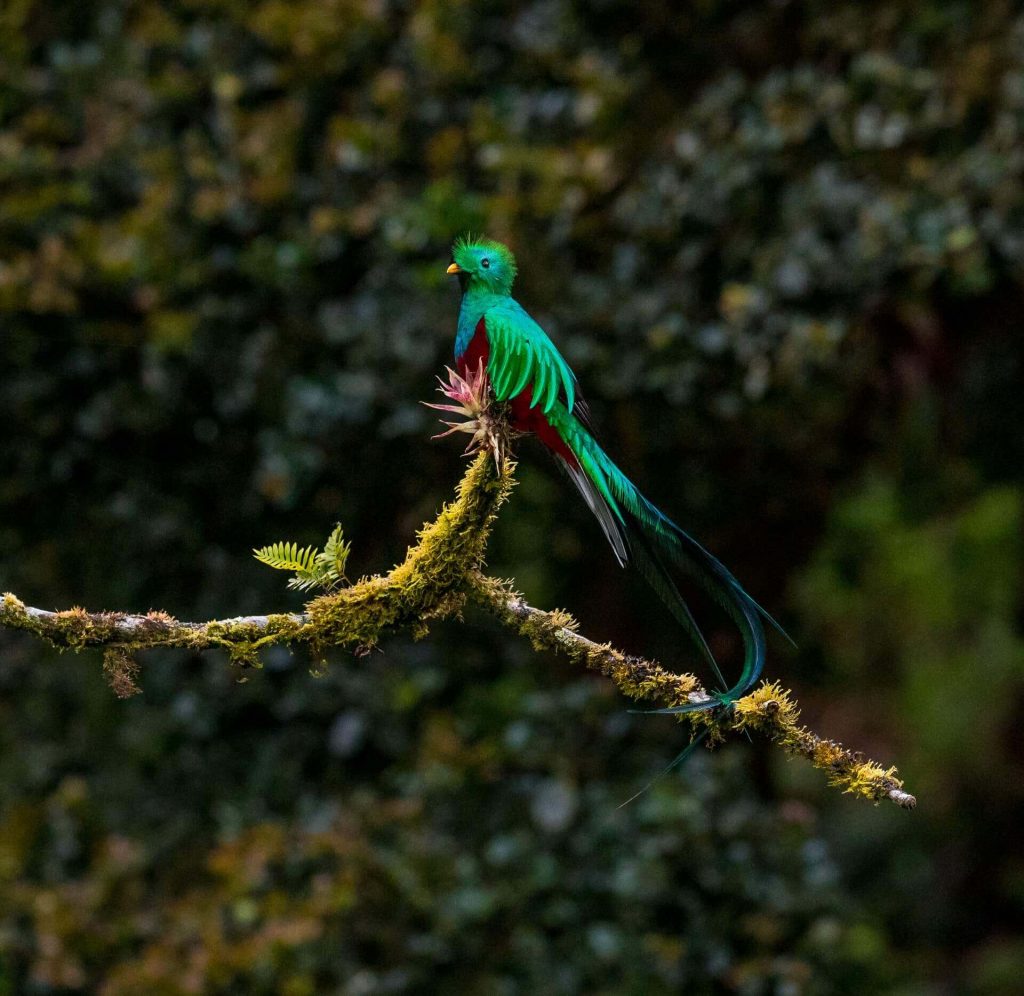
4. It comes alive at night.
If you have the opportunity, step into the forest at night (on a guided tour of course) and you’ll see it come alive in the moonlight.
On our night tour on the edge of the Santa Elena reserve we spotted snakes poised to strike unfortunate passing prey, tarantulas curled up in holes, tree frogs, a possum, and (my favourite) an emerald toucan sleeping with his beak under his wing!
If you want to see wildlife, night time is your opportunity.
5. The Monteverde cloud forest… looks really freaking cool.
Nothing clever to be said here. Just look at it.
This is the stuff of movies, right? From strangler figs to orchids and avocado trees to vines and mosses, even if you see nothing but vegetation, this adventure through truly misty mountainous forest has got to be worth the visit!
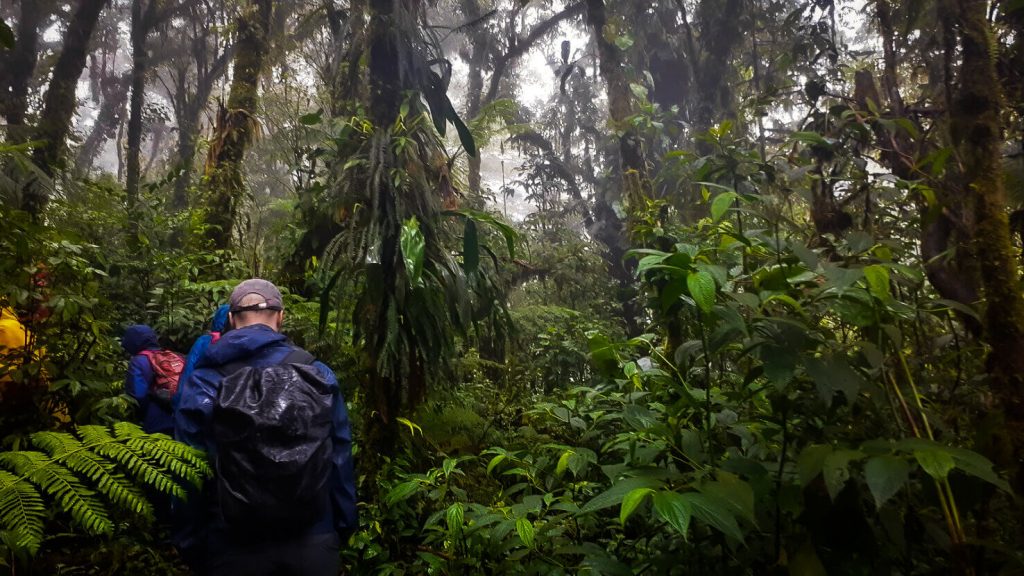
Whilst You’re There…
Whilst you’re in Monteverde there are a couple of other quick trips I would highly recommend.
These were both things I admit I had initially written off, but we had some free time to fill so I thought we could try and I really enjoyed it!
Butterfly Gardens
The butterfly gardens were great…but not so much for the butterflies as everything else!
We had a guided tour with a girl with amazing knowledge off all things insect related. She showed us all kinds of bugs. I also left with a new appreciation for leaf-cutter ants, having learned about their social structures and symbiotic relationship with a fungus.
Hummingbird Café
This was fairly out of the way and we had to take a taxi to get there, but it was well worth it for the abundance of wild hummingbirds that flocked to the feeders around the café.
There was a stunning array of different colours, shapes and sizes of hummingbird loveliness. I left with a new found love for these little guys!
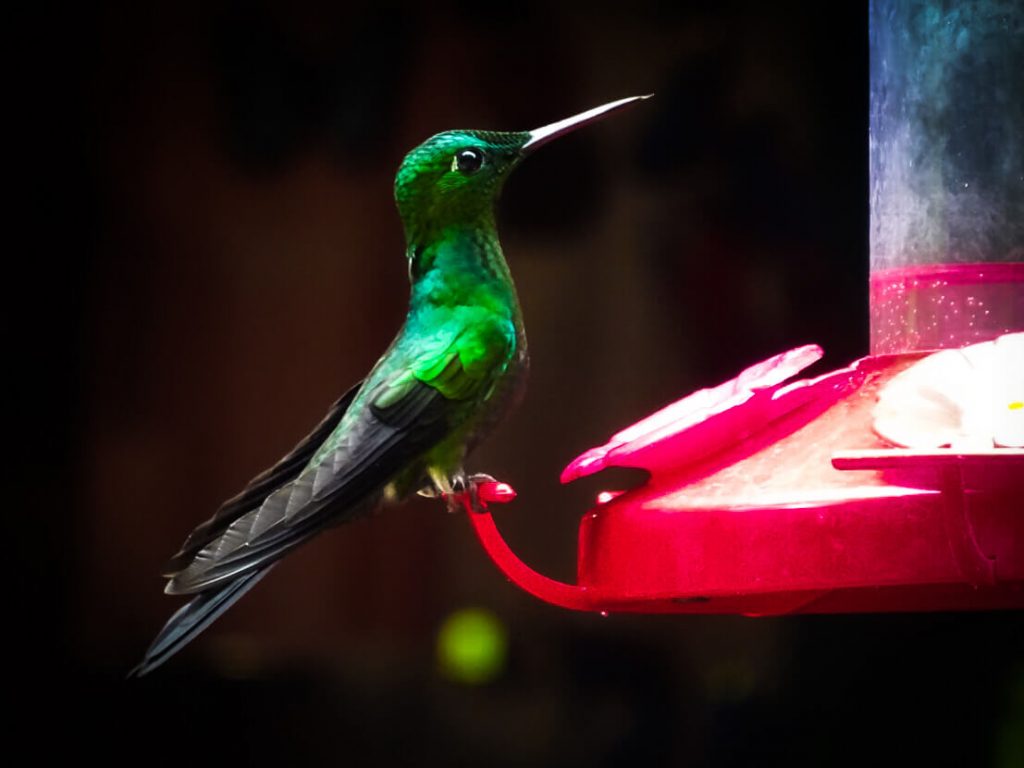
One Wild Thing
Clearly taking a trip to the Monteverde cloud forest is off the cards right now but you can still show your support.
Why not donate to the Monteverde community fund to help pay for carbon neutral products and support those suffering due to covid-19? Or else make a donation to projects from the Monteverde Institute to support future research projects.



